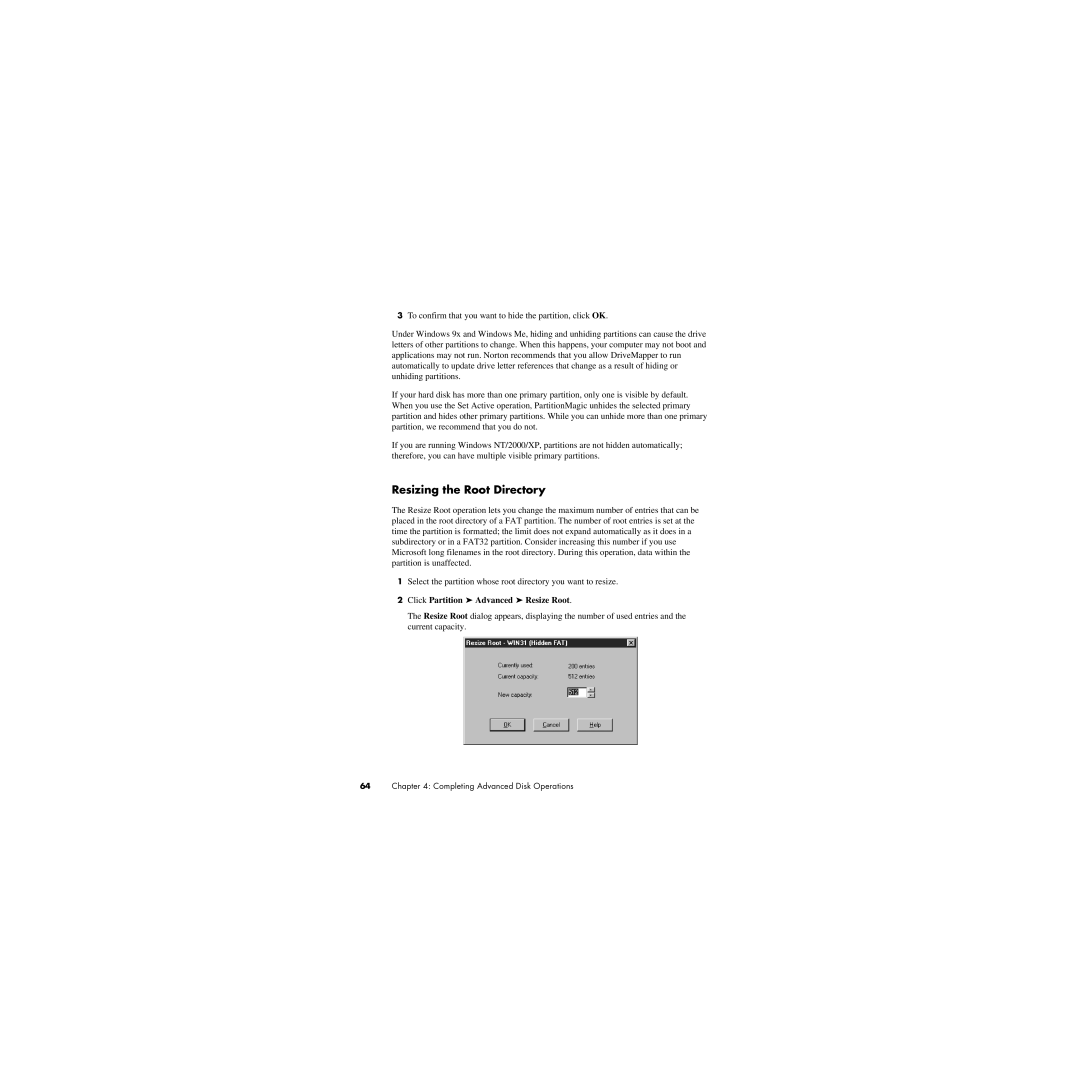
3To confirm that you want to hide the partition, click OK.
Under Windows 9x and Windows Me, hiding and unhiding partitions can cause the drive letters of other partitions to change. When this happens, your computer may not boot and applications may not run. Norton recommends that you allow DriveMapper to run automatically to update drive letter references that change as a result of hiding or unhiding partitions.
If your hard disk has more than one primary partition, only one is visible by default. When you use the Set Active operation, PartitionMagic unhides the selected primary partition and hides other primary partitions. While you can unhide more than one primary partition, we recommend that you do not.
If you are running Windows NT/2000/XP, partitions are not hidden automatically; therefore, you can have multiple visible primary partitions.
Resizing the Root Directory
The Resize Root operation lets you change the maximum number of entries that can be placed in the root directory of a FAT partition. The number of root entries is set at the time the partition is formatted; the limit does not expand automatically as it does in a subdirectory or in a FAT32 partition. Consider increasing this number if you use Microsoft long filenames in the root directory. During this operation, data within the partition is unaffected.
1Select the partition whose root directory you want to resize.
2Click Partition ➤ Advanced ➤ Resize Root.
The Resize Root dialog appears, displaying the number of used entries and the current capacity.
64Chapter 4: Completing Advanced Disk Operations
